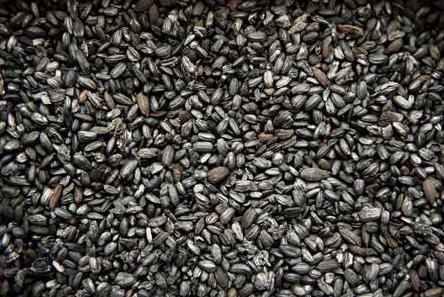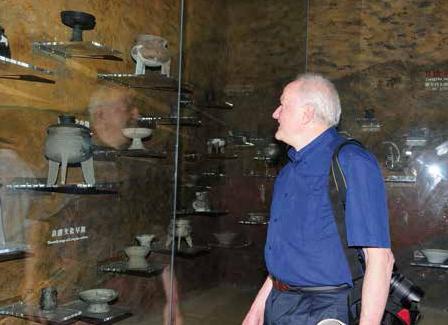良渚,为东亚文明归纳出特质

栈桥码头考古遗迹发掘现场。
古埃及文明、苏美尔文明、哈拉帕文明和中华文明是国际学术界公认的四大古老文明。国际学术界普遍认为,苏美尔文明最早形成,古埃及文明次之,稍后是哈拉帕文明,中华文明最晚。
前三大文明所处的尼罗河流域、两河流域及印度河流域,都位于北纬30°。良渚古城同样如此,而且,它以自己的存在,彰显了不同文明的个性。
归纳出东亚文明的特质
在东亚地区,可以与良渚古城遗址在“早期国家”和“城市文明”等方面进行比较的考古遗址,在《世界遗产名录》和《预备名单》中尚属空白。
良渚文明的存在,为东亚文明归纳出了自己的特质。
浙江省文物考古研究所研究员陈明辉说,苏美尔文明、古埃及文明和哈拉帕文明三处文明各具特色,但又共享许多文化因素,互相之间也有着密切的文化和贸易往来。
比如,它们都以小麦、大麦作为主食,家畜中都有绵羊、山羊、牛、猪、狗等,肉食来源种类丰富,泥砖建筑普遍,有了青铜冶炼技术,宗教、贸易在文明的形成过程中发挥了重要的作用。
而东亚地区距今5000年前后的史前文明,如良渚、屈家岭、大汶口、红山等,可称为东亚文明圈。东亚地区以粟、黍和水稻作为主食,家畜以猪、狗为主,土木建筑是主要的建筑形式,玉器是主要的文明载体,贸易在文明形成过程中的作用还有待探讨。
良渚文明是中国距今五千多年最为耀眼和突出的区域文明,同时也是特征鲜明的文明体。陈明辉说,它归纳了东亚文明的特质——城市文明、玉器文明、稻作文明、土筑文明、水利文明、原始文字、礼制文明、宗教文明等。
挑战对中华文明的传统认识
如果对西方文明、国家起源有一些了解的人,应当听过一个著名的理论:文明三要素。
按照西方物质文明指征,文明有三个标志:城市、金属、文字。这套“文明公式”已经沿用多年,在中国也一直占据主导地位。
城市,毫无疑问,良渚有。但良渚没有青铜器,也没有发现文字。尽管在陶器或石器上发现了成组或单个的刻画符号和原始文字,有的很像象形文字,但还没有一组成组符号可以被认为是书写系统。曾有专家据此认为良渚还没有进入国家阶段。
国际学术界对中华文明的认识存在的三个误区。

良渚古城遗址公园内,游客拍摄反山王陵随葬品影像。
浙江省文物考古研究所所长刘斌曾这样归纳——
第一个误区是将中华文明作为一个整体来对待,而忽视了中华文明形成之前还存在着多个区域文明。
第二个误区是将中原文明作为中国早期文明的唯一代表,而以中原文明的形成作为中国早期文明形成的标志。
第三个误区是以青铜器、文字作为判断文明的绝对标准,而将未发现青铜器、未破译文字的文化摒除出文明之列。
类似的观点,考古学家张光直先生在《论中国文明的起源》中早就说过:“文字、青铜器和城市是不是所有的‘文明都有的成分呢?中国有,两河流域有,但中美的古代文明没有青铜器,南美的古代文明没有文字。是不是这样说来中美与南美古代文化史上都没有‘文明这一个阶段呢?”
其实,这种标准未必适用于中国的早期文明。
世界著名考古学家科林·伦福儒就认为,有三个因素,可促使人们去重新评估良渚作为早期国家社会代表的历史地位。
“首先是良渚古城的规模,包括内城和外城。其次是根据墓葬材料所得出的社会等级的划分,非常精美的玉器基本都出土于贵族墓葬中。最后一点是公共工程的规模,包括莫角山土台,以及用来控制季风性山洪的高坝和低坝系统。”
也就是说,除了文字和青铜器,良渚古城呈现的各个方面均已达到文明国家的要求。
“良渚文明”成为了个例,它挑战了过去国际学术界对于国家文明三要素的固有观念。
中国新石器时代被低估
良渚文明是一种以神权为纽带的文明模式,与以二里头文化为代表的夏文明的文明模式大相径庭,而与古埃及的文明模式更接近。
陈明辉就认为,良渚文明的确认,提供了早期文明的又一个案例,对良渚文明的深入研究,也有利于丰富世界早期文明理论。
已故著名考古学家、原故宫博物院院长张忠培先生很早就说过,“从目前的考古发现和研究来看,如果我们要谈中华五千年文明,只有良渚文化的良渚遗址能拿得出来”,因为,这一时期是神权和军权并重的神王之国的国家形态。
还有很早就关注良渚遗址的著名考古学家严文明先生,在2016年良渚文化发现八十周年学术研讨会上,他也讲到:“假若良渚是一个国都的话,那些(指福泉山、寺墩等)就是各个州郡所在地,这就是一个很像样的广域王权国家了。”
如何证明?

5000年前良渚炭化稻米。
考古学者牟永抗、劉斌作过阐述——“良渚文化时已经产生了相当数量的社会财富,并集中到少数人手中,个人财产正在迅速增加;原始宗教相当发达,构成了上层建筑的一个重要方面,产生了以玉琮、玉钺为首的代表神权与军权的礼器系统;兽面神像所表现的容貌,已成为良渚文化圈内共同的崇拜神像,是融合艺术与宗教一体的良渚原始宗教和礼仪制度的代表和象征;巫觋与行政首领是良渚统治者的双重身份;精致的艺术品玉器的大量出现并用作与物质生活无关的礼仪活动,标志着专业工匠和宗教职务人员等组成的知识阶层的产生;能埋入高台墓地的只是少数的显贵者,高高在上的大墓和星布于居住址内的小墓,反映出人们社会关系的分裂。”
“以兽面神像为形象的宗教崇拜和琮钺为代表的礼器系统所反映的原始宗教和政权形式,以及土筑高台墓地,棺、椁礼器所代表的显贵者阶层,作为进入文明的许多特征,成为汇入华夏文明的重要组成部分。”对于良渚时期的社会形态,这是学者们的普遍认知。

游客在良渚博物院展厅阅读有关良渚的关键词。
“中国的新石器时代是被远远低估的时代,良渚社会的复杂程度与阶级制度,已达到了‘国家的标准。”
——良渚古城遗址申遗成功,足以证明考古学家伦福儒早先说过的这句话的意义。
(本文图片:CFP提供)
Liangzhu City: A Model of East Asia Civilization
The Archaeological Ruins of Liangzhu City is so unique in terms of regional early state and urban civilization that no similar sites of other civilizations in East Asia of that time exist on the World Heritage List. The Liangzhu Civilization presents a series of characteristics that define the East Asia Civilization.
The Egyptian Civilization, the Sumerian Civilization and the Harappan Civilization, which are considered the three major civilizations of that time in West Asia, shared quite a few similarities. All the three civilizations had wheat and barley as staple food, and raised sheep and goats, cows, pigs, dogs and had a wide choice of meat supply, had mud brick houses, and developed bronze making technologies, and had religion and trade making a key contribution to the advancement of civilizations.

聯合国教科文组织助理总干事班德林在良渚博物院驻足观看出土器物。
Cultures of 5,000 years ago in present-day China formed a circle of East Asia Civilization. In this civilization, millet, corn and rice were staple food, domestic animals were largely dogs and pigs, earthen and wood buildings dominated, and jades played a central role. Whether trade contributed to the forming of the civilization is to be further explored.
The Liangzhu Civilization was the most outstanding regional civilization of 5,000 years ago in China. This civilization present distinct characteristics that define East Asia Civilization: urbanism, jade, rice agriculture, earthen building, water conservancy, primitive pictograms, ritual system, and religion.
Those who have read about the genesis of western civilizations and states may be familiar with the following traditional civilization theory: a civilization is a form of human culture in which many people live in urban centers, have mastered the art of smelting metals, and have developed a method of writing. For a long time, this formula was applied diligently to judging whether a culture could be considered a civilization. And if this criterion were applied to the study of Liangzhu, one could probably conclude that the Liangzhu Culture was by no means a civilization.
In the international archaeological community, three popular misconceptions led to the misunderstanding of the Chinese Civilization for a long time, according to Liu Bin, director of Zhejiang Institute of Cultural Relics and Archaeology. It is erroneous to consider the Chinese civilization as an all-inclusive and overall entity and ignore a number of regional civilizations prior to the formation of the Chinese civilization. It is equally erroneous to consider the civilization in the central China as the only representative of the early Chinese civilization and therefore consider the civilization in central China represents the early Chinese civilization. It is erroneous to use bronze and writing systems as absolute criteria and therefore exclude cultures without bronze wares and understandable writing systems from the rank of civilizations.
Now experts say that the set of standards does not apply to early Chinese civilizations.
Three factors make it necessary and possible to reevaluate the historical position of Liangzhu representative of a regional early state, according to British archaeologist and paleolinguist Colin Renfrew. The first factor is the mega size of the Liangzhu City including the Inner City and the Outer City. The second factor is the obvious social strata as seen in graded tombs. Finest jade objects are all from tombs where nobles were buried. The last factor is the size of the public works including the Mojiaoshan earthen terrace, the High-Dam and Low-Dam system that controls floods in the Monsoon season.
The Liangzhu Civilization is a case study that challenges the stereotypes once popular with the international archaeological community.
Some people say that the Neolithic China has been seriously underestimated. The international recognition of the Liangzhu Civilization provides a case study of early civilizations across the world. More studies of the Liangzhu Civilization will enrich the theory of world early civilizations.
In fact, some Chinese scholars reasonably disagreed with the set of three criteria a long time ago. Zhang Zhongpei who was curator of the Palace Museum in Beijing and passed away in 2017 said a long ago that Liangzhu was a perfect case study of a realm of deity and kings where religious power and military power joined hands and ruled. Zhang considered Liangzhu Archaeological Site fully qualified for a discussion of the 5,000-year Chinese civilization.
“If Liangzhu City was a state capital, then some settlements far away from the state capital would be like prefectural and county capitals. In that case, Liangzhu would add up to be a wide-area kingship state,” reasoned Yan Wenming, a prominent archaeologist who has concerned himself with the Liangzhu archaeological excavations and research for a long time, at a symposium in commemoration of the 80th anniversary of the discovery of Liangzhu Culture in 2016.

良渚瑤山祭坛遗址。
A relatively thorough study of unearthed evidences on material wealth, religion, jade artifacts, social strata, graded cemeteries, craft specialization, high population density, urban planning, large-scale construction, human resources, food, agriculture, water conservancy, ritual system as seen in Liangzhu City can provide a wealth of information on Liangzhu and enable scholars to conclude that Liangzhu is indeed a civilization.
The successful inclusion of Archaeological Ruins of Liangzhu City onto the UNESCOs World Heritage List suggests that the international archaeological community has accepted Liangzhu as an early civilization.

